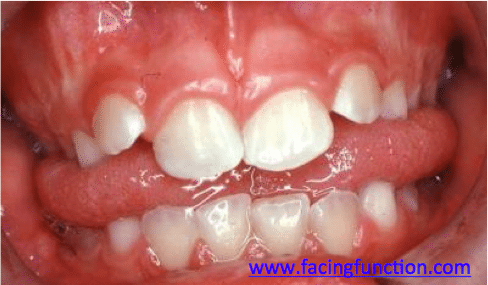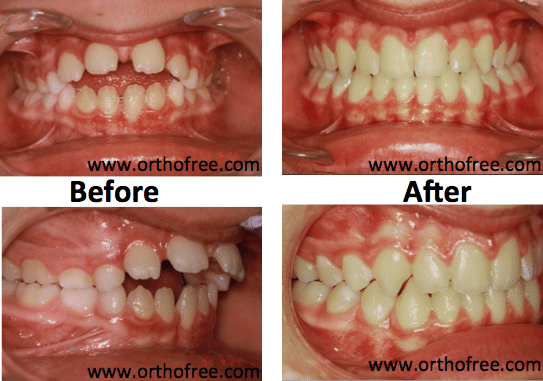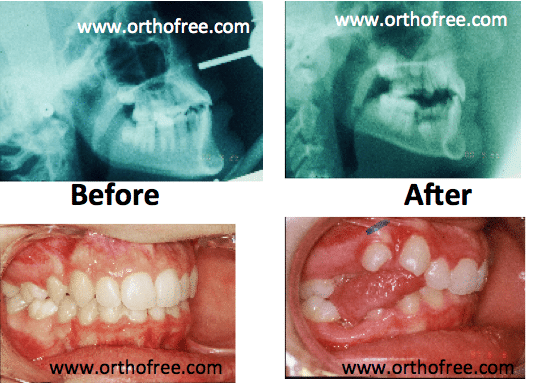In this article, this is the first collaboration with www.Orthofree.com, tackling one of the oral habits in children which is tongue thrusting explaining its definition, causes, consequences, treatment and ending it with some case reports.
Oral Habits in Children
Tongue Thrusting
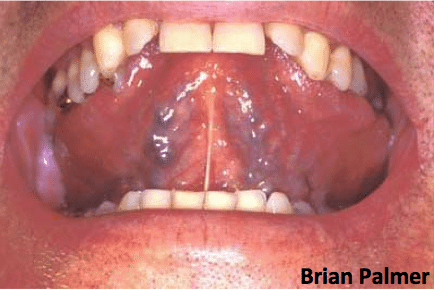
Tongue thrusting, is the habit of placing the tongue in the wrong position during swallowing. To understand how swallowing occurs, make the sound of the letter “N”, you will notice the placement of the tongue behind theupper central teeth. That placement of the tongue is the first step in swallowing naturally in adults.
Tongue thrust (also called reverse swallow or immature swallow) is the common name of orofacial muscular imbalance, a human behavioral pattern in which the tongue protrudes through the anterior incisors during swallowing, speech, and while the tongue is at rest. Nearly all young children exhibit a swallowing pattern involving tongue protrusion, but by the age of six most have switched to a normal swallowing pattern. People who tongue thrust do it naturally and are usually unaware of the behaviour.
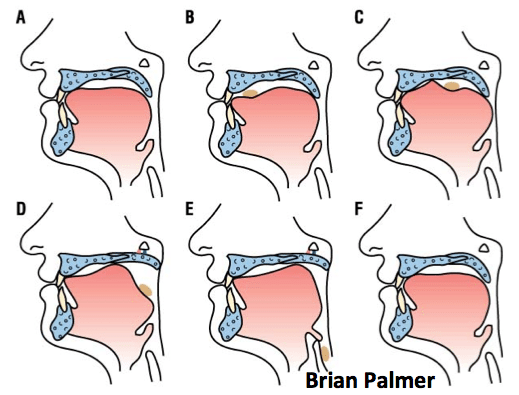
Etiology
- Upper airway constrictions (deviated nasal septum, or obstructions -enlarged tonsils-or infections rhinitis)
- General hypotonia or low body tone
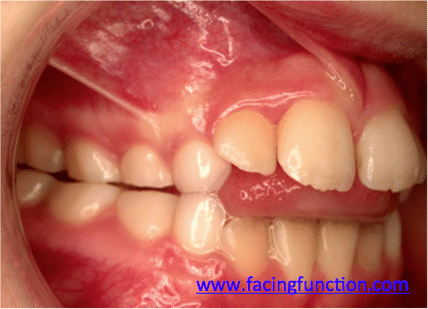
- Low-lying resting posture of the tongue
- Imbalance in dental growth
- Inadequate development of facial and cranial bones
- Inappropriate development of muscles in the head and neck areas
- Thumb sucking.
- Some artificial nipples used for feeding infants
- Mouth breathing
- Nasal congestion
- Allergies
- Difficulty swallowing: (adenoids, tonsils, enlarged tongue)
- Other: hereditary factors and/or abnormalities (Muscular, neurological or physiological)
- Short lingual frenum
Types
- Anterior open bite: The most common type of tongue thrust. In this case, the front lips do not close and the child often has his mouth open with the tongue protruding beyond the lips.
- Anterior thrust: Upper incisors are extremely protruded and the lower incisors are pulled in by the lower lip. This type of thrust is most generally accompanied by a strong mentalis.
- Unilateral thrust: The bite is characteristically open on either side.
- Bilateral thrust: he anterior bite is closed, but the posterior teeth from the first bicuspid to the back molars may be open on both sides. This is the most difficult thrust to correct.
- Bilateral anterior open bite: The only teeth that touch are the molars, with the bite completely open on both sides including the anterior teeth. A large tongue is also noted.
- Closed bite thrust: Typically shows a double protrusion meaning that both the upper and lower teeth are flared out and spread apart.
Consequences
The force of the tongue against the teeth is an important factor in contributing to malformation (“bad bites”). Many orthodontists have had the discouraging experience of completing dental treatment, relapse orthodontic treatment
- Lisping (for e.g., saying “thun” for sun)
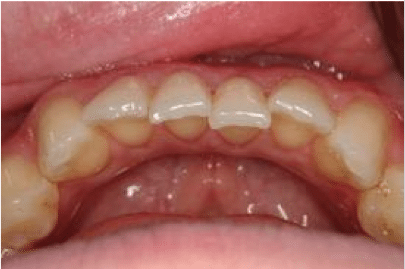
- Imprecise articulation of speech sounds
- Open-mouth posture
- Open bite
- Abnormal eruption of teeth and dental arch
- Abnormal tone of facial muscles
- Prolonged meal times due to ineffective chewing and swallowing
- Spillage of food/fluid from the anterior mouth
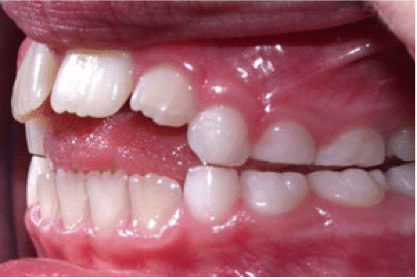
- Negative cosmetic effects
- Problems with fitting of denture in futur
[divider scroll_text=””]
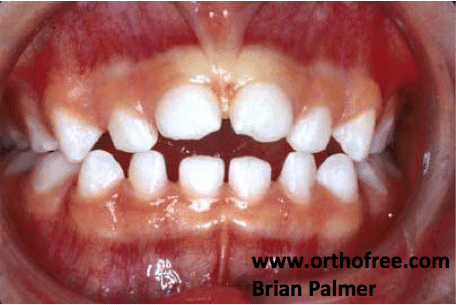
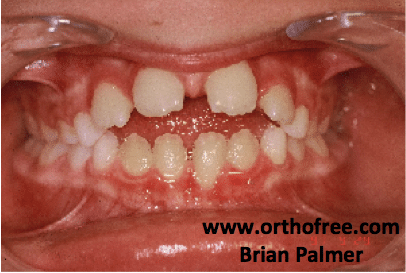
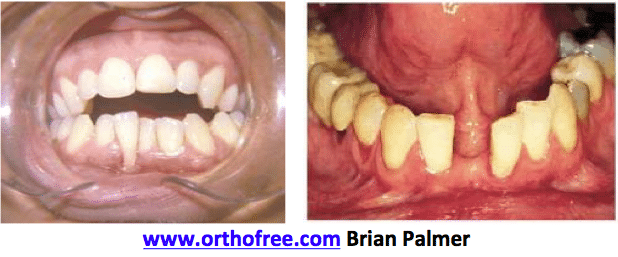
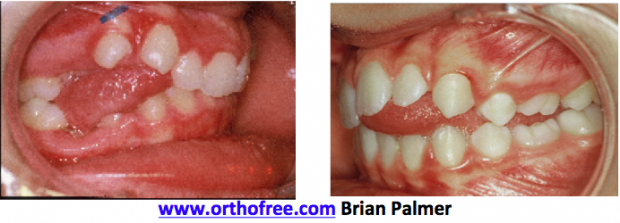
Posterior open bite on left side due to a posterior tongue thrust.
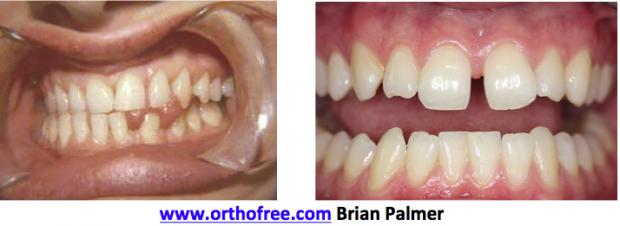
Treatment
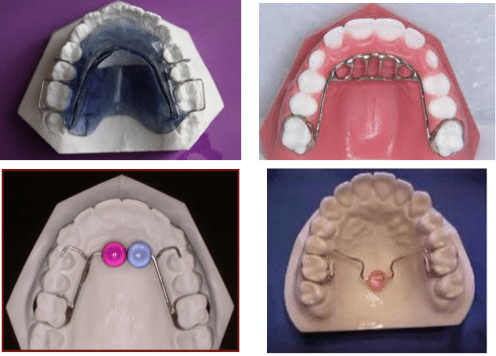
There are two methods for treating tongue thrusting. The patient may place an appliance similar to a nightguard in the mouth at night, or may wear a more permanent device that can be removed and adjusted by a dentist. The other method requires oral habit training, an exercise technique that re-educates the muscles associated with swallowing by changing the swallowi
ng pattern. This method must be taught by a trained therapist. Therapy has proven to give the highest percentage of favorable results; however, the appliance is still used and is successful in some cases.
In some cases, speech therapist is required to help rehabilitate during the treatment
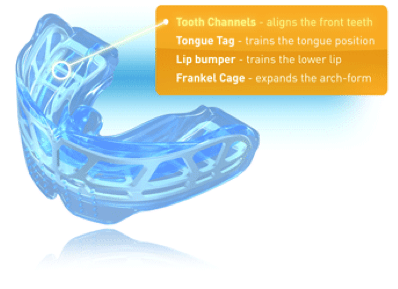
Case Reports
Case 1
Case 2
Case 3
Case 4
Case 5
Case 6
Original Source
[slideshare id=31660319&doc=oralhabitsinchildrentonguethrusting-140226040911-phpapp02]
Sources
- OrthoFree.com a Dental Community for Communication and information in orthodontics.
- FacingFunction.com
- Wikipedia.com
OziDent Members Only
The rest of article is viewable only to site members,Please Register and/ or Confirm registration via EmailHere.If you are an existing user, please login.
